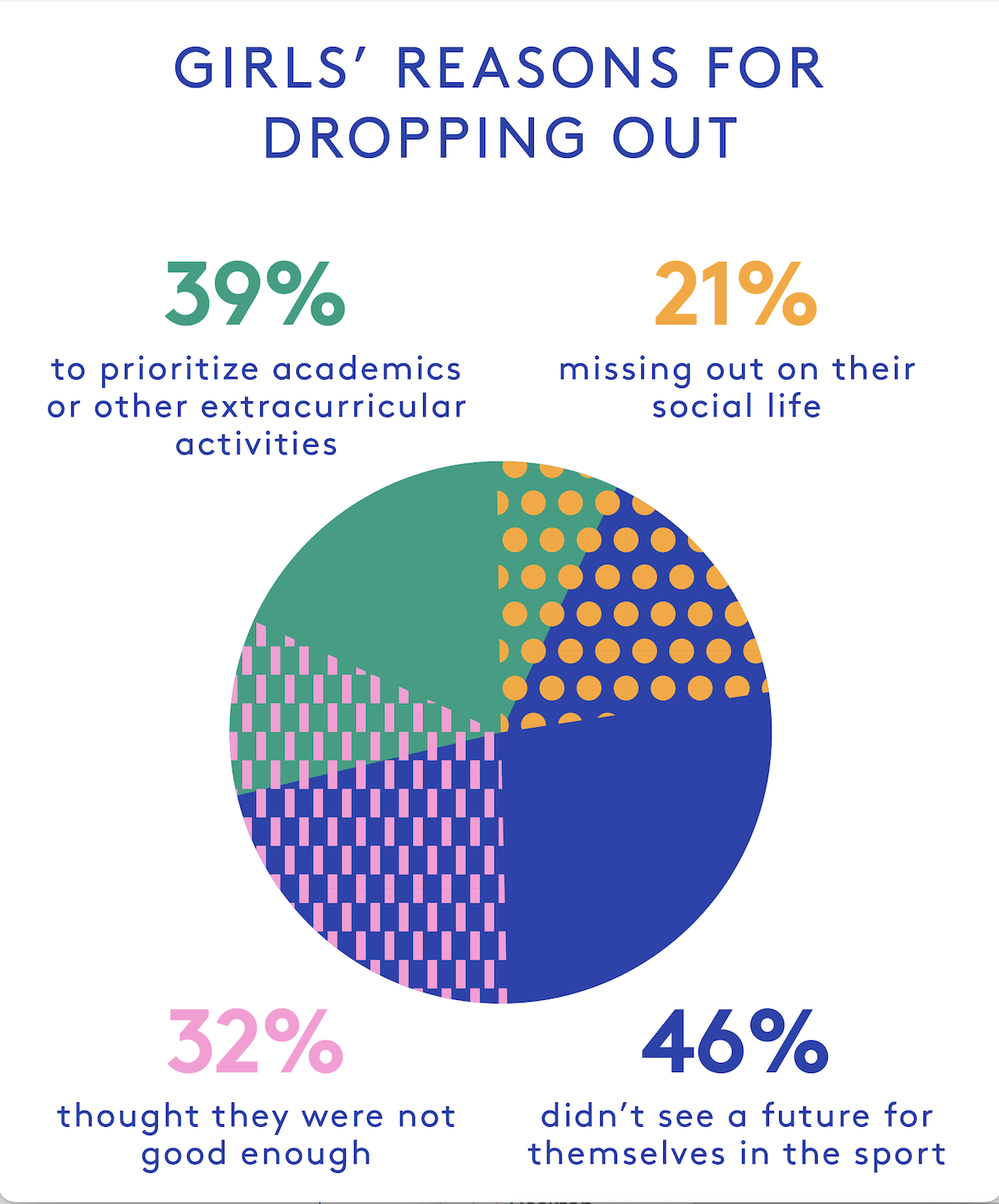The Mental and Societal Pressures of Female Athletes
The dropout rate for young female athletes is up to six times greater than it is for male athletes. The sole factor behind the significant difference appears to be that girls just lose interest or get burned out more easily. In addition, sociocultural factors remove the exhilarating aspects of competition and teamwork from girls’ sports.
“Give it your all or nothing” is a phrase that athletes are widely familiar with. Ultra-competitive sports begin well before high school for many athletes, and the opportunity cost of investing all of the athlete’s time and effort is enormous and can limit their ability to take part in unrelated opportunities such as school clubs. Female athletes devote their time to the sport they adore, and multitudes of rewards come as a result. However, for athletes that also delegate their time into other aspects of their life, they find that they don't have the option to be a competitive part-time athlete.
School and club organizations sparsely provide team opportunities for a competitive female athlete that can only train a few days out of the week. This is a direct result of the lack of funding for female sports. Slashed budgets do not permit numerous teams for females as opposed to the male sports budget. For example, football teams around the United States have many different levels of competitive teams because a greater percentage of the budget goes to football. However, the money allotted to female sports is allocated to the elite teams to continue the development of the most advanced players, and the remaining players are relegated to a recreational team. This means that the choice is usually between practicing 5-6 times a week and traveling to tournaments every other weekend, versus solely practicing and attending local tournaments. As a girl develops, her priorities can change, so the scarcity of teams causes the girl to end up dropping out of the sport that she loves deeply.
Sociocultural factors also play a large part in girls’ dropout rates. To be an athlete of elite caliber, proper measures must be taken to prolong health and durability. The Academy of Nutrition and Dietetics recommends that a female athlete eats between 2,200 to 3,000 calories per day. A healthy diet includes a balance of carbohydrates, fats, and proteins, which are all necessary for muscle growth. However, this tends to contradict the “ideal body” image for females because a muscular body has historically been characterized as masculine, while a thin body is promoted to be feminine.
A female athlete's self-esteem can plummet when they begin to gain weight in muscle, which could lead to underconsumption of an adequate caloric intake, underperformance, and depression. To add to the athlete’s self-consciousness, some coaches enforce strict diets and exercise regimens. To many young girls, body image is prioritized over athletic achievement. Research on objectification theory indicates that female athletes tend to believe that an external view of their body defines their perception of their physical self. Many sports such as cheerleading, gymnastics, swimming, and dance place females in skin-tight uniforms. Girls will starve themselves before competing to fit into their uniform and society’s demands that she look a certain way. This pressure is causing overwhelmingly high dropout as well as eating disorders in girls and young women.
Outdoor track, which is the most popular female sport in the United States and the second most popular male sport according to the Washington Post, has 605,354 male participants as opposed to 488,267 female participants. In relation to the discrepancy between gender statistics, in 2019, the United States was composed of 51% (37,308,668 people) males and 49% (35,720,480 people) females. The lower percentage of female participation that is evident is due to societal idiosyncrasies, and the lack of prioritization and choices for female athletes. More funding, a greater amount of teams at all levels of competitiveness, and the discouragement of strict diets that leads to body dysphoria will reduce the limitations faced by female athletes. Once this happens, girls will not feel as much of the pressures that are causing a disproportionate dropout rate in sports and can utilize sports to be competitive or complement their life.
Works Cited
Bogage, Jacob. “Analysis | High School Sports Participation Drops for the First Time in 30 Years.” The Washington Post, WP Company, 30 Aug. 2019, www.washingtonpost.com/sports/2019/08/28/high-school-sports-participation-drops-first-time-years/.
“Child Population by Gender: KIDS COUNT Data Center.” KIDS COUNT Data Center: A Project of the Annie E. Casey Foundation, datacenter.kidscount.org/data/tables/102-child-population-by-gender?loc=1&loct=1#detailed/1/any/false/1729,37,871,870,573,869,36,868,867,133/14,15,65/421,422.
“Do You Know the Factors Influencing Girls' Participation in Sports?” Women's Sports Foundation, 11 Oct. 2019, www.womenssportsfoundation.org/do-you-know-the-factors-influencing-girls-participation-in-sports/.
Ekern, Baxter, et al. “Body Image and Female Athletes: Are Women Judged More Harshly?” Eating Disorder Hope, 14 May 2020, www.eatingdisorderhope.com/blog/body-image-female-athletes-women-judged-harshly.
Erin Coleman, R.D. “Healthy Eating for a Teenage Athlete.” Healthy Eating | SF Gate, 27 Dec. 2018, healthyeating.sfgate.com/healthy-eating-teenage-athlete-6798.html.
“Female Athlete Triad (for Teens) - Nemours KidsHealth.” Edited by Mary L. Gavin, KidsHealth, The Nemours Foundation, Jan. 2014, kidshealth.org/en/teens/triad.html.
Lench, Brooke de. “Sports Dropout Rate for Girls Six Times Rate For Boys.” MomsTeam, www.momsteam.com/successful-parenting/youth-sports-parenting-basics/parenting-girls/sports-dropout-rate-for-girls-six.
Rpowell. “Mind, Body and Sport: Eating Disorders.” NCAA.org - The Official Site of the NCAA, 15 Nov. 2017, www.ncaa.org/sport-science-institute/mind-body-and-sport-eating-disorders.


